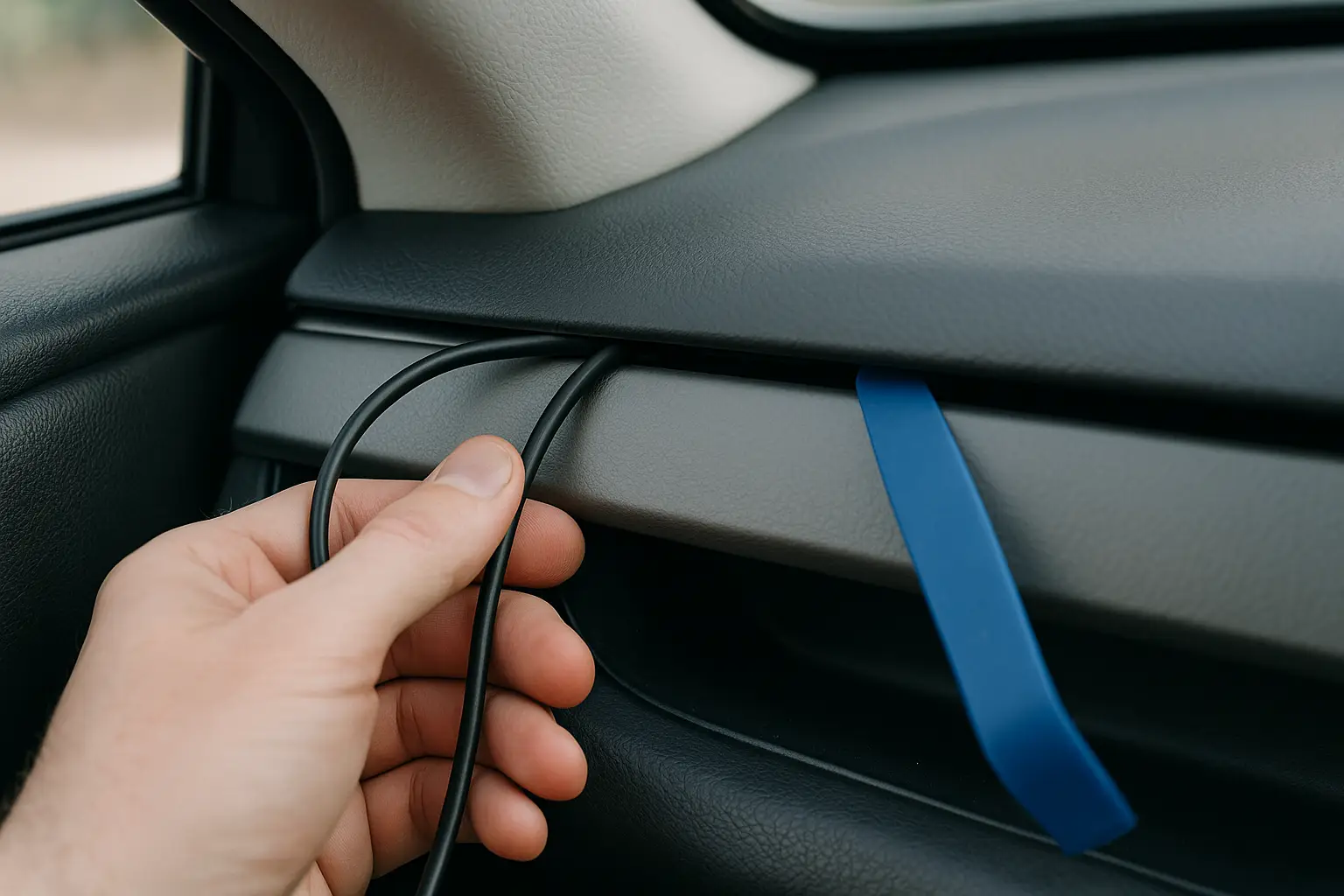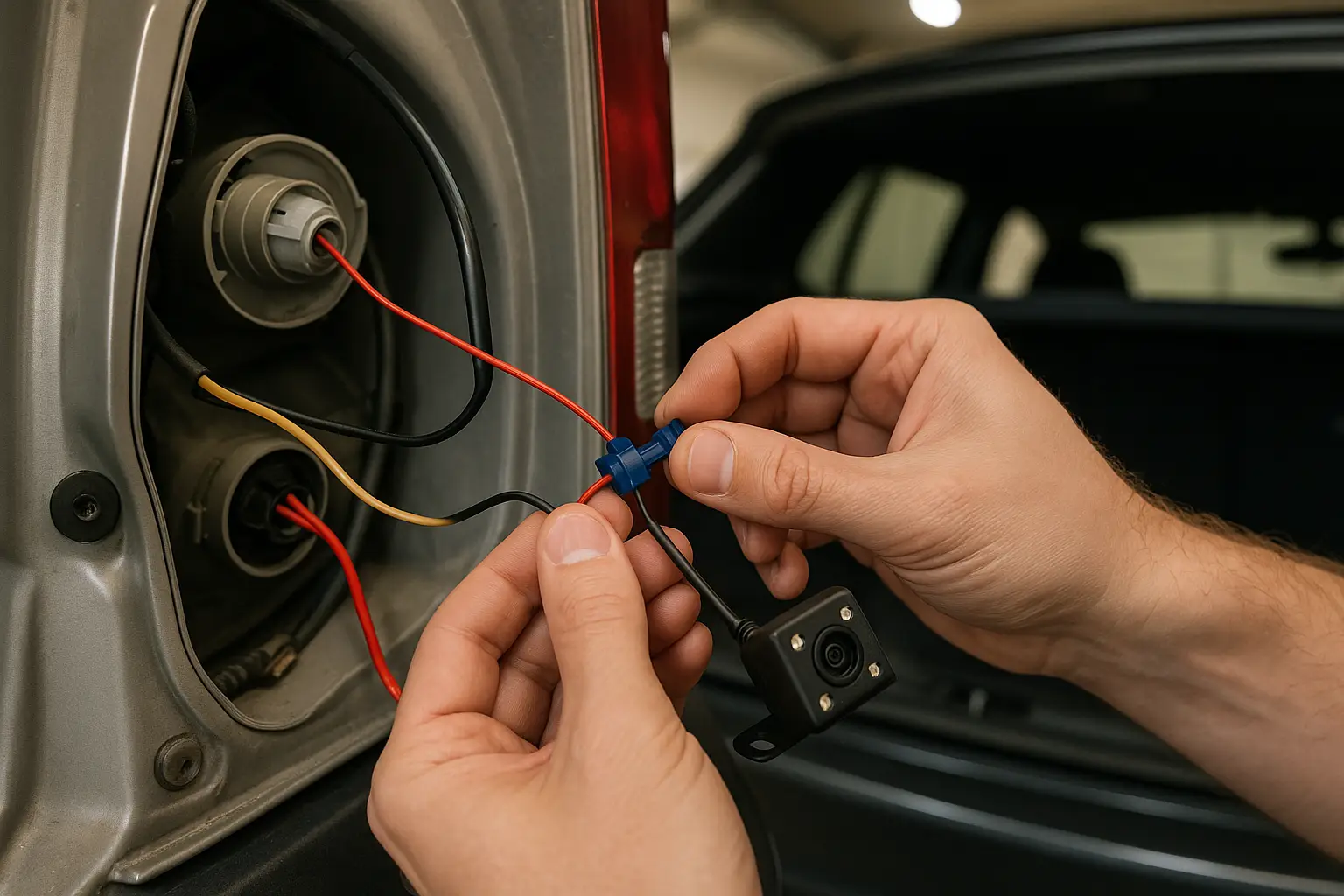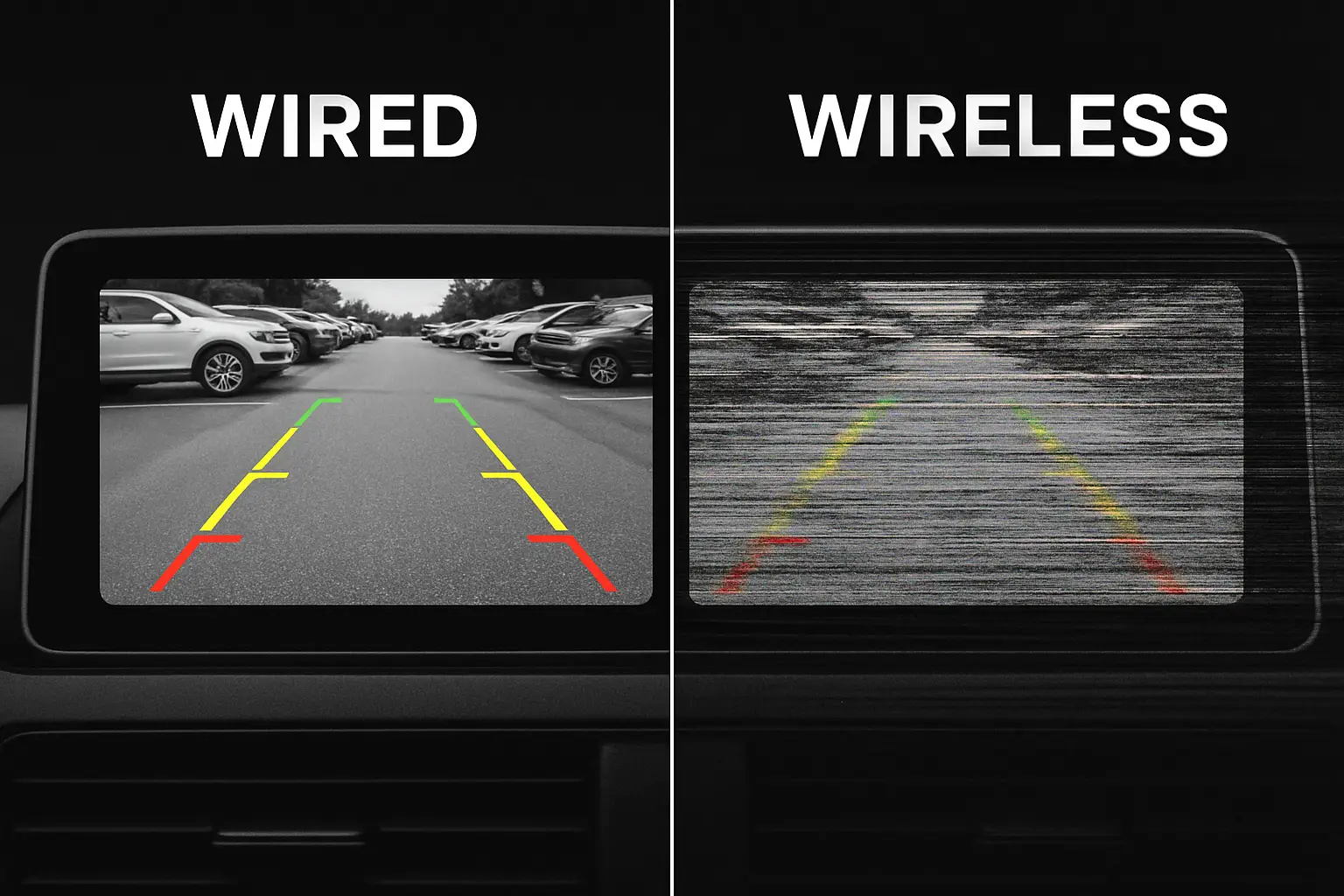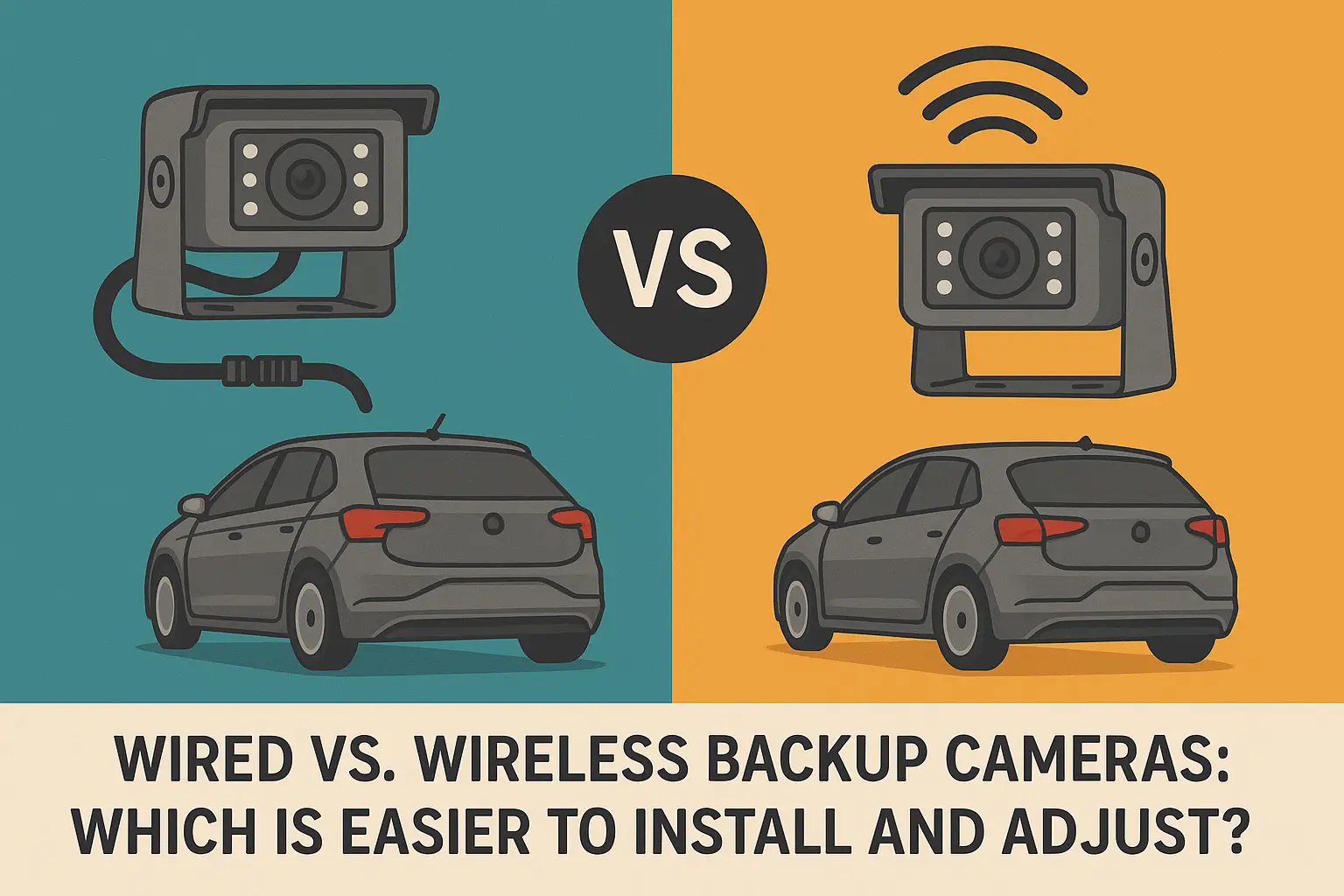Installing a new backup camera feels like a huge job. Choosing the wrong type can turn a weekend project into a total headache. This guide makes the choice simple.
Wireless cameras are typically faster to install because you don't run a long cable through the car. But, wired cameras give a more stable signal, which makes final adjustments for a perfect, interference-free view much easier.

The word "easier" really depends on what you're comfortable with. Are you more worried about pulling interior panels or dealing with potential electronic interference? Let's break down each system. I want you to see the full picture so you can choose the right camera for your vehicle and your skills. For us at VST Tech, an informed driver is a safer driver.
Is a Wireless Backup Camera Truly Plug-and-Play for Installation?
You want the quick and easy installation promised by wireless cameras. But "wireless" can be misleading and might still need you to work with your car's wiring.
A wireless camera avoids running a video cable from the back to the front of your car. However, you must still power the camera, usually by tapping into the reverse light wires. The monitor also needs power, so it isn't completely wire-free.

People think "wireless" means no wires at all. That's not quite right. The "wireless" part is the video signal. It travels through the air from the camera to the monitor. But both the camera and the monitor need electricity to work. For the camera at the back, this usually means connecting its power line to your vehicle's reverse light circuit. When you put the car in reverse, the lights turn on, and so does the camera. For the monitor up front, the easiest way is to plug it into your car's 12V socket, the one people used to call the cigarette lighter. Some people prefer a cleaner look and will hardwire the monitor to the fuse box. After you provide power, you have to "pair" the camera and monitor so they can talk to each other. It’s like connecting your phone to a Bluetooth speaker. So while you skip the big cable run, you still have some electrical work to do.
| Installation Step | Wireless Camera | Wired Camera (Basic) |
|---|---|---|
| Camera Power | Connect to reverse light | Connect to reverse light |
| Video Signal | Wireless pairing | Run cable to dash |
| Monitor Power | 12V socket or hardwire | Connect to dash power |
| Main Challenge | Potential signal pairing | Routing the main cable |
How Complicated is Running the Cable for a Wired Backup Camera?
The idea of running a long cable through your car sounds very difficult. You worry you might break a plastic trim piece or make a mess of your interior.
Running the main video cable is the biggest task for a wired system. It means routing the wire from your trunk, hiding it under interior trim panels, and getting it to the dashboard. It takes more time, but it’s a physical task, not an electrical one.

The main job with a wired camera is routing the single video cable from the rear of the car to the monitor on your dashboard. It sounds harder than it is. Most cars have channels and spaces that make this job manageable. I’ve done this hundreds of times. You start at the trunk, pass the cable through a rubber grommet that other factory wires use to get inside the car. This keeps water out. From there, you can tuck the wire under the headliner or beneath the plastic trim panels along the floor. A simple plastic trim removal tool helps you pop these panels off without scratching anything. You just work your way from the back to the front. Zip ties are your best friend here, keeping the cable neat and away from any moving parts. While it takes more patience than a wireless setup, it's a very logical process. Once the cable is at the dash, you just plug it in. The result is a rock-solid connection that you never have to think about again.
Key Steps for a Clean Cable Run
- Find a Path: Look for existing wire channels along the door sills or headliner.
- Use Grommets: Pass the cable through existing rubber grommets to go from outside to inside.
- Hide the Cable: Use trim tools to gently pry open interior panels and tuck the cable behind them.
- Secure Everything: Use zip ties to keep the cable neat and prevent rattles.
Which Camera System is Easier to Adjust for a Perfect, Stable View?
Your camera is installed, but the picture flickers or the angle is just not right. A bad view makes the camera useless and frustrating to use.
Wired cameras are much easier to adjust for a perfect, stable view. The direct cable connection gives you a clear, lag-free image. This lets you fine-tune the camera angle precisely, without the signal dropouts or interference that can plague wireless systems.

Getting the perfect view is the final, crucial step. Both wired and wireless cameras need physical adjustment. You have to tilt the camera itself up or down to get the right angle. But the real difference is the stability of the image you see while you are making those adjustments. A wired camera sends the video signal through a protected cable. The picture on your monitor is crystal clear and happens in real-time. This means you can make a small adjustment and see the result instantly. With a wireless camera, you're relying on a radio signal. This signal can get interference from many things, like other Wi-Fi networks, Bluetooth devices in your car, or even some high-power electrical systems. This can cause the image to flicker, freeze, or lag. I've seen people get incredibly frustrated trying to adjust a camera angle when the picture keeps cutting out. A wired system removes all that guesswork. The stable signal means what you see is what you get, making it simple to set the parking gridlines and camera angle perfectly one time.
| Adjustment Factor | Wireless Camera | Wired Camera |
|---|---|---|
| Signal Quality | Can be unstable | Very stable |
| Image Lag | Possible | None |
| Interference Risk | High | Very Low |
| Ease of Fine-Tuning | Can be difficult | Simple and direct |
Conclusión
In my experience at VST Tech, the "easier" camera depends on your priority. Wireless is quicker to install if you dislike interior work, but wired is easier to live with long-term. For us, safety is about 100% reliability. A backup camera must work perfectly every single time you shift into reverse, without glitches or signal loss. A wired connection is the only way to guarantee that. It provides the stable, clear image you need to make safe decisions. That unwavering performance is the foundation of our mission to protect your driving safety, because you can't afford to have your safety system fail, even for a second. The extra time spent on a wired installation is a small investment for permanent peace of mind.


